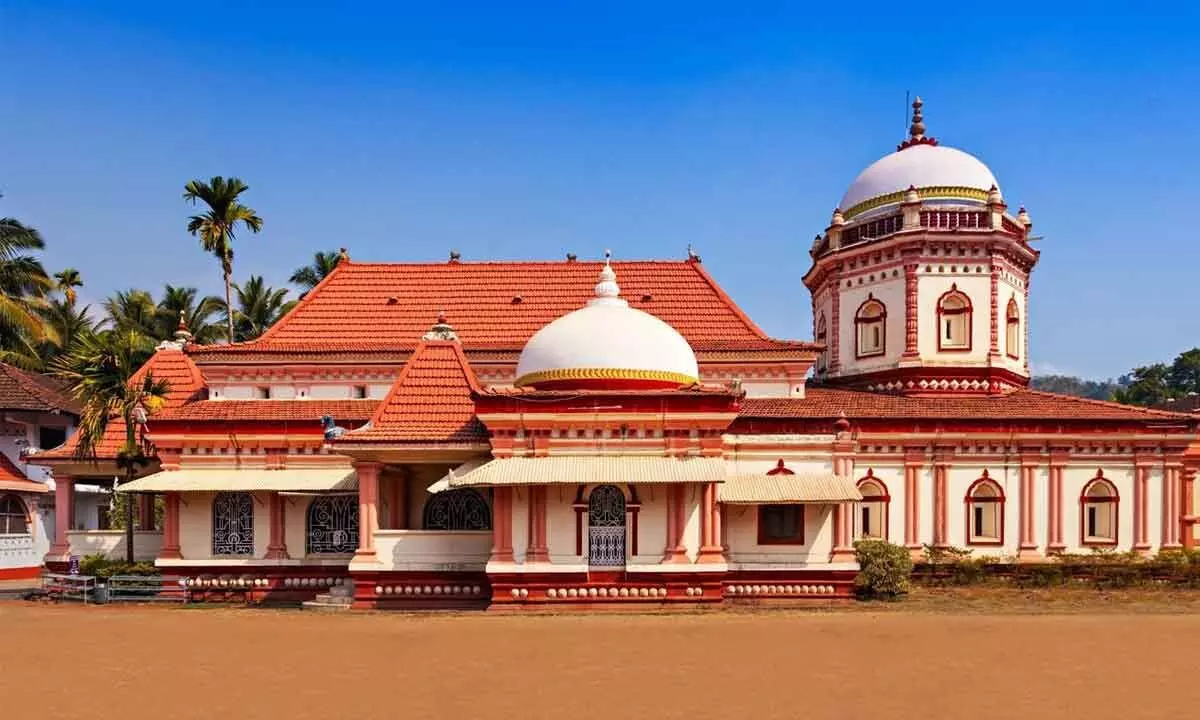How Goa turning into a spiritual destination
Chhatrapati Shivaji rebuilt the Saptakoteshwar temple and warned the Portuguese against destroying temples
image for illustrative purpose

Sawant has been inspired by the massive potential that is being tapped from the Ram temple in Ayodhya with regard to the region’s economic development. It has been likewise with Tirupati, Shirdi, Ajmer and Amritsar or the Vatican, Mecca and Kartarpur Sahib in Pakistan
If you think that Goa is all about sun, sand and beaches, you are grossly mistaken. A good augury is that boasting of a rich history of historic temples and Sanatan culture, the state is gradually moving to reasserting its glorious past. Much like the manner temples were destroyed by Muslim invaders and rulers, temples in Goa were destroyed by the Portuguese during their over 450-year rule.
In a welcome move, Goa Chief Minister Pramod Sawant has said that the BJP government is readying the state’s new journey.
“It is time we wipe out the last traces of the Portuguese. We are planning to present a new-look Goa when India celebrates its 100 years of independence,” he said at a function commemorating the 350th anniversary of the coronation of Chhatrapati Shivaji Maharaj, who founded the Maratha Empire in the 17th century.
The Maratha ruler mooted the idea of swaraj or self-government in the country. He came to Goa and rebuilt the Saptakoteshwar temple and warned the Portuguese against destroying temples.
“This is why we say the major credit for saving the Hindu culture goes to Shivaji and his son Sambhaji,” he said.
Meanwhile, Goa’s tourism department is all set to develop community-based tourism centres around 11 temples across the state as part of the department’s Ekadasha Teertha. The 11 temples, which have been identified, will be from seven eco-sensitive zones in the state where development and construction cannot be taken up.
The campaign is based on the four pillars of spirituality, ingenuity, civilisational and cultural nationalism, and conscious tourism. The initiative is part of the shift away from Goa’s beaches and towards spiritual tourism to stave off competition from Thailand, Indonesia and even the bigger Indian states.
A feature of the project will be the active involvement local communities and women-led groups around places of worship. Tourists will be encouraged to visit temples and learn about the vibrant local lifestyle. The local communities can pass on their heritage and earn money from the venture.
Meanwhile, Goa Tourism Development Corporation (GTDC) is set to give a facelift to temples in Quepem, Sattari, Canacona and Savordem and present Goa as Dakshin Kashi. Reportedly, architectural firm Fourth Dimension Architects Pvt. Ltd. will prepare the Detailed Project Report (DPR) for the beautification and illumination of temples in Sattari apart from the Shantadurga temple, Shree Betal Nagnath temple, and Agondeshwar temple in Canacona.
Goa Tourism Board’s empowered committee will finalise the spiritual tourism circuit soon.
For starters the Shree Betal Nagnath Temple at Dhade in Sanvordem will get washrooms, an entrance arch, lighting and other facilities at a cost of Rs. four crore. An equal budget has been allocated for developing amenities and beautification of the Shantadurga Temple at Fatorpa. Approximately, Rs. 3.7 crore has been earmarked for Agondeshwar Temple at Agonda, which will be overseen by Darashaw and Company Pvt. Ltd.
The architecture of Goan temples is a little different mostly because of historical reasons. The fundamental design of any Hindu temple is organized around the central shrine or the “Garbagriha” or the “sanctum sanctorum” that houses the main deity. Surely, religious heritage sites and temples have the potential to bring in quality and high-spending tourists. As part of the vision, the tourism department is working on a strategy to create spiritual circuits in Goa, which will be publicised by way of campaigns and documentaries.
Sawant has been inspired by the massive potential that is being tapped from the Ram temple in Ayodhya with regard to the region’s economic development. It has been likewise with Tirupati, Shirdi, Ajmer and Amritsar or the Vatican, Mecca and Kartarpur Sahib in Pakistan.
After visiting Ram temple in Ayodhya, Sawant posted on X, "Feeling blessed to visit and offer prayers to Shri Ram Lalla at #Ayodhya Shri Ram Janmabhoomi. The Ayodhya Shri Ram Mandir is the manifestation of the love, trust, and belief of crores of Indians in Prabhu Shri Ram (sic).
"The temple has been built after a Jan Aandolan of centuries and Balidan of many Karsevaks. I once again congratulate Hon'ble PM Shri @narendramodi Ji for the Pran Pratistha of Shri Ram Lalla. Prayed for the peace, prosperity, and happiness of the people of Goa. May Shri Ram Lalla bless us all. #JaiShreeRam(sic)."
Can Goa become the religious and spiritual capital of India? Of course, it can, if one goes by the way it is moving forward to achieve the cherished goal.
Religious and spiritual tourism will lead to an inclusive economic development of the state and create employment opportunities for Goans, which will help negate the adverse publicity that Goa attracts.
There is no denying a balanced economic growth can be assured when religious and spiritual tourism moves to the hinterland.
(The author is Delhi-based senior journalist and writer. He is author of Gandhi's Delhi which has brought to the forth many hidden facts about Mahatma Gandhi)

